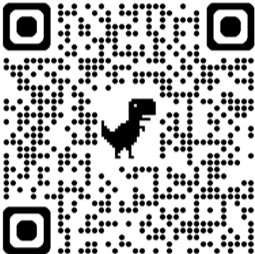AP PSYCH SEMESTER 1 REVIEW BINGO!
AP PSYCH REVIEW SEM 1
Create multiple-choice games on Wisc-Online and play them on our Chakalaka mobile app!
But that's not all! Explore educational games created by others. Simply search by category or enter agame code number and dive into a world of learning and fun.
Download the Chakalaka mobile app here:

Topics of this game:
- our behavior is guided by hidden motives, unconscious desires, childhood issues, or unresolved conflicts
- the variable that is manipulated in an experiment
- the variable that is measured in an experiment
- a statistical statement of how likely it is that an obtained result occurred by chance
- measure of the extent to which two variables change together, how well either variable predicts the other
- post-experimental explanation of a study, including its purpose and deceptions to its participants
- period of inactivity after neuron has fired; the rest period which the neuron can't fire again
- uses magnetic fields & radio waves to produce computer-generated images of soft tissue and brain anatomy
- junction between the axon tip of the sending neuron and the dendrite or cell body of the receiving neuron
- send information away from the central nervous system to muscles or glands
- interconnected cells covering the cerebral hemispheres; ultimate control & processing center
- the sensory & motor neurons that connect the central nervous system to the rest of the body
- constructs perceptions from the sensory input by drawing on our experience & expectations
- analysis which starts at the sensory receptors and works up to the brain's integration of sensory information
- the focusing of conscious awareness on a particular stimulus
- Conversion of one form of energy into another that the brain can use
- minimum difference between two stimuli required for detection 50% of the time; JND
- 3 kinds of cones that work in pairs; if one is stimulated, the other is inhibited
- an organism learns to associate a behavior and its consequences; reward & punishment
- pairing two items together and learning to associate them together
- an undesirable stimulus is removed to increase a behavior
- stimulus that initially elicits NO response but with conditioning will elicit a response
- the tendency for similar stimuli to elicit a similar response
- the process of observing and imitating a specific behavior
- activated memory that holds a few items briefly before the information is stored or forgotten
- the relatively permanent and limitless store-house of memory; knowledge, skills, experiences
- organizing items into familiar, manageable units; often occurs automatically
- a momentary sensory memory of visual stimuli; a photographic or picture-image memory
- incorporating misleading information into one's memory of an event
- a simple thinking strategy that often allows us to make judgments and solve problems efficiently
User comments are currently unavailable. We apologize for the inconvenience and are working to restore this feature as soon as possible.

